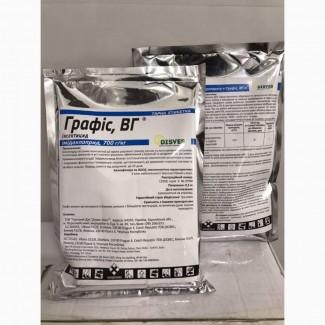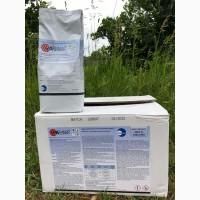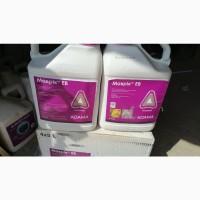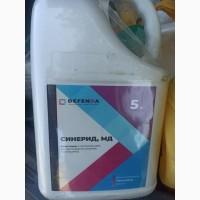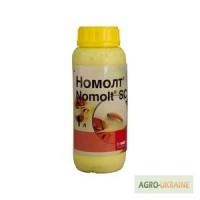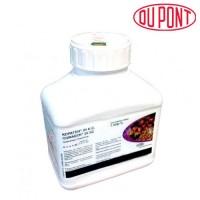/ Fertilizers and plant protection products / Insecticides / Grafis is the best insecticide for protection...
For sale / buy
Grafis - the best insecticide for the protection of apple orchards , Kyiv region.
Price22.5$
Region:all of Ukraine,
Kyiv region.
(Vyshhorodok)
Updated:
Grafis insecticide - the best insecticide to protect apple orchards.
The main active substance: Imidacloprid.
Concentration of the active substance: Imidacloprid, 700 g/kg.
Chemical class of the drug: 3
Preparative form: Water-soluble granule.
Manufacturer: Disves L.L.C. Czech Republic.
Container volumes: a box of 20 bags of 0.5 kg, the price is for 1 kg.
Mechanism of action:
Imidacloprid blocks postsynaptic nicotinyl receptors in insects and interrupts physiological nerve innervation, resulting in damage to the nervous system and death of the insect.
Grafis insecticide penetrates all parts of the plant through leaves, stems and roots, which provides long-term protection of the plant from pests.
Benefits of use:
-effective in the fight against pests that have latent stages (miners, thrips, leafhoppers and others);
- the biological effectiveness of the use of the drug does not depend on temperature conditions, the effect of solar radiation and washing away by rain;
- rapid action of the drug and exclusion of the occurrence of resistance in pests;(//tractor-service.com)
- the possibility of use in drip irrigation due to the strong root system action;
- low toxicity for warm-blooded animals and safe for the environment;
- a long period of protection against pests (up to 25 days).
Insecticide Grafis - application regulations:
The culture (object) being processed - The object against which it is processed - The method of processing - The term of the last processing (in days beforeharvest) - The maximum frequency of processing - The rate of consumption of the drug
* Apple tree
- Apple fruit eater, Apple lump-like shield, elm-cereal aphid - Spraying during the growing season
-30
-2
-0.07
Application features:
* insecticide treatment is carried out on growing crops when there is a need to protect them from pests in the morning or in the evening at a wind speed of 2-3 m/s;
* the drug can be used in tank mixtures with most pesticides, with the exception of highly alkaline drugs. In each specific case, when using tank mixture, it is desirable to make sure of the physico-chemical compatibility of the components and its phytotoxicity to the culture;
* consumption of working solution on crops - 300-400 l/ha, in the garden - 1000-1500 l/ha.
The main active substance: Imidacloprid.
Concentration of the active substance: Imidacloprid, 700 g/kg.
Chemical class of the drug: 3
Preparative form: Water-soluble granule.
Manufacturer: Disves L.L.C. Czech Republic.
Container volumes: a box of 20 bags of 0.5 kg, the price is for 1 kg.
Mechanism of action:
Imidacloprid blocks postsynaptic nicotinyl receptors in insects and interrupts physiological nerve innervation, resulting in damage to the nervous system and death of the insect.
Grafis insecticide penetrates all parts of the plant through leaves, stems and roots, which provides long-term protection of the plant from pests.
Benefits of use:
-effective in the fight against pests that have latent stages (miners, thrips, leafhoppers and others);
- the biological effectiveness of the use of the drug does not depend on temperature conditions, the effect of solar radiation and washing away by rain;
- rapid action of the drug and exclusion of the occurrence of resistance in pests;(//tractor-service.com)
- the possibility of use in drip irrigation due to the strong root system action;
- low toxicity for warm-blooded animals and safe for the environment;
- a long period of protection against pests (up to 25 days).
Insecticide Grafis - application regulations:
The culture (object) being processed - The object against which it is processed - The method of processing - The term of the last processing (in days beforeharvest) - The maximum frequency of processing - The rate of consumption of the drug
* Apple tree
- Apple fruit eater, Apple lump-like shield, elm-cereal aphid - Spraying during the growing season
-30
-2
-0.07
Application features:
* insecticide treatment is carried out on growing crops when there is a need to protect them from pests in the morning or in the evening at a wind speed of 2-3 m/s;
* the drug can be used in tank mixtures with most pesticides, with the exception of highly alkaline drugs. In each specific case, when using tank mixture, it is desirable to make sure of the physico-chemical compatibility of the components and its phytotoxicity to the culture;
* consumption of working solution on crops - 300-400 l/ha, in the garden - 1000-1500 l/ha.
|
Store, contacts | |
Yuriy| ||191 / feedback, info. / activity evaluation | |
|
Phone:
+38(xxxxxx
show
| |
Ad ID: #1094413
(додано зареєстрованим користувачем, дата реєстрації: 10-08-2016)
Added / Updated: 2024-10-08 08:45 (current, until: 08-10-2025)
Permanent Ad Address:
Impressions / views for today: ?, total: ?
